Nairn Combination, Nairn
At least three of the parishes that were to form the Nairn Combination, also operated their own parochial poorhouses or almshouses. These were locally administered rather than operating as a statutory poorhouse under the central Board of Supervision.
Abernethy operated a group of what the census called "lodging houses" from at least 1871, paid for out of the poor rates. They were located at the east of Nethy Bridge, on what is now Mackenzie Crescent. The premises are identified as a poorhouse on both the Ordnance Survey first edition map of 1871, and on the second edition map of 1901 shown below. Unlike the two separate blocks shown in 1901, the earlier map shows a long, single structure. In 1904, the establishment could house 10 men and 10 women, under the supervision of a resident matron.
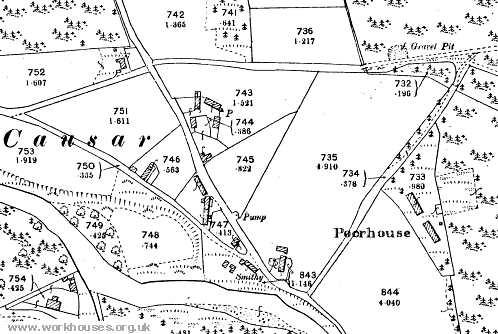
Abernethy poorhouse site, 1901
The former Nethy Bridge poorhouses are now known as Lynstock Cottages.
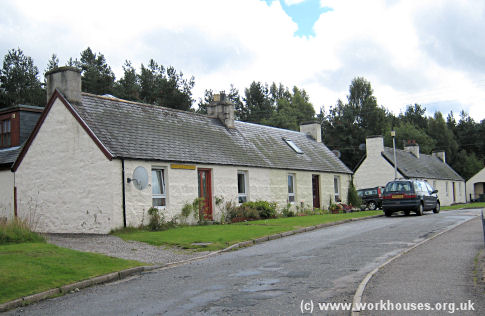
Abernethy former poorhouses, 2010.
© Peter Higginbotham.
Cromdale operated at least three parish poorhouses, or what the 1881 census called "cottages for the poor". The oldest property, dating from around 1854, was located about a mile to the north-east of Grantown-on-Spey and is identified as a poorhouse on both the OS first edition (approximately 1874) and second edition (approximately 1902) maps. The building no longer exists but the map evidence indicates that it was divided into eight dwellings.
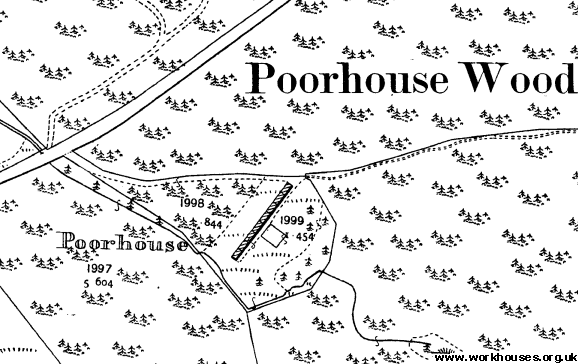
Cromdale poorhouse site, 1902.
Cromdale established a second poorhouse in around 1889 in a building formerly the Parochial School. A third poorhouse, accommodating up to 18 men or women, was set up in a building purchased for £40 by the Parish Council in about 1902.
From about 1864, Duthil had a poorhouse located about a mile to the south-east of Carrbridge, financed by the poor rates and the Fire Insurance Society. In 1904, it could house 11 men or women. Two cottages were also provided for children.
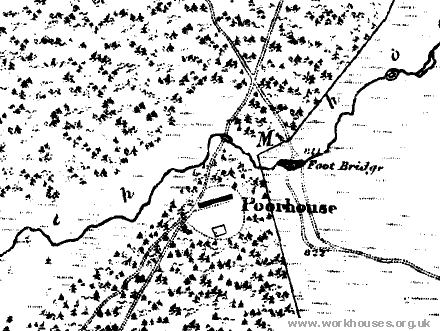
Duthil poorhouse site, 1902.
The Nairn Combination (also known as Nairn Union) initially comprised the eight parishes of: Ardclach, Ardersier, Auldearn, Cawdor, Croy, Edinkillie, Nairn and Petty. Later additions included Abernethy, Cromdale, Duthil, and Dyke. The total population of the member parishes in 1881 was 23,420.
The Nairn Union poorhouse was erected in 1860-1 on a three acre site between Balblair Road and the railway at the south-west of the Nairn. It opened its doors in February 1862 and could accommodate up to 70 inmates, although generally had about 45 in residence. The site location and layout are shown on the 1869 map below.
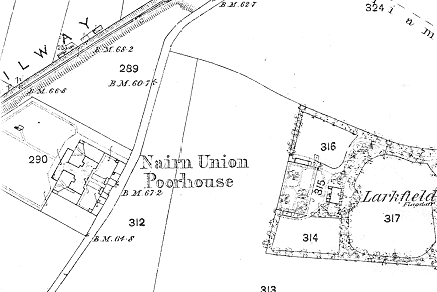
Nairn site, 1876.
A single-storey entrance block stood at the west of the site. This probably contained the porter's quarters, a committee room, and possibly an office for the relieving officer.
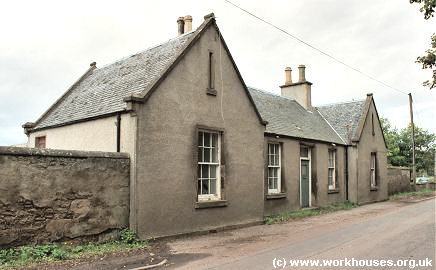
Nairn entrance block from the south-west, 2001.
© Peter Higginbotham.
The main building was a typical H-shaped layout. The larger block at the front was a two-storey corridor plan building with a central portion which would have contained the Master's quarters at the centre with the kitchen and dining-hall cum chapel in the central block at the rear. The two wings of the front block contained male and female accommodation, probably with the aged at the front side and able-bodied or "dissolute" inmates at the rear. Children's quarters were usually placed at the far end of each wing. In the rear range of single-storey buildings were found various work and utility rooms including a bakehouse on the men's side and laundry on the female side.
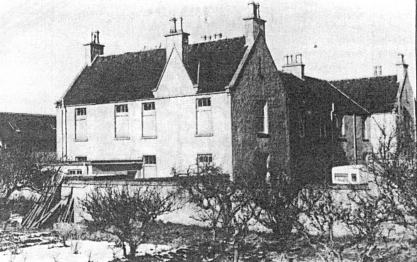
Nairn entrance lodge and main block from the south-east, 2001.
After 1930, the workhouse became a hospital and local authority nursing home known as Balblair House. In 1946, an official report noted that the establishment provided 52 beds for 'indigent poor (including children), mental defectives, harmless lunatics, chronic sick, and occasional maternity cases (illegitimate).' Apart from the matron, however, there were no trained nursing staff.
The site was sold off in the 1970s and the buildings used for a variety of commercial purposes. After lying empty for ten years, the main building was demolished in 2000. The entrance block is now all that survives.
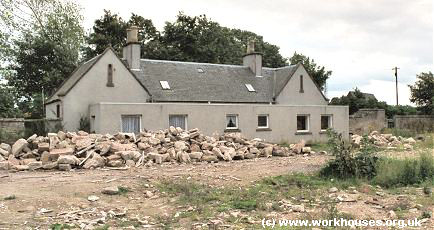
Nairn site from the north, 2001.
© Peter Higginbotham.
Staff
Inmates
- 1881 Census - Abernethy Lodging Houses
- 1881 Census - Cromdale Cottages for the Poor
- 1881 Census - Nairn Combination Poorhouse
Records
Note: many repositories impose a closure period of up to 100 years for records identifying individuals. Before travelling a long distance, always check that the records you want to consult will be available.
- Highland Archive Service, Bught Road, Inverness IV3 5SS, Scotland. Only holdings are for the Balblair Home era: minute books, admissions and discharge records, accounts and ledgers (1940-1975).
Bibliography
- None.
Links
- None.
Unless otherwise indicated, this page () is copyright Peter Higginbotham. Contents may not be reproduced without permission.


